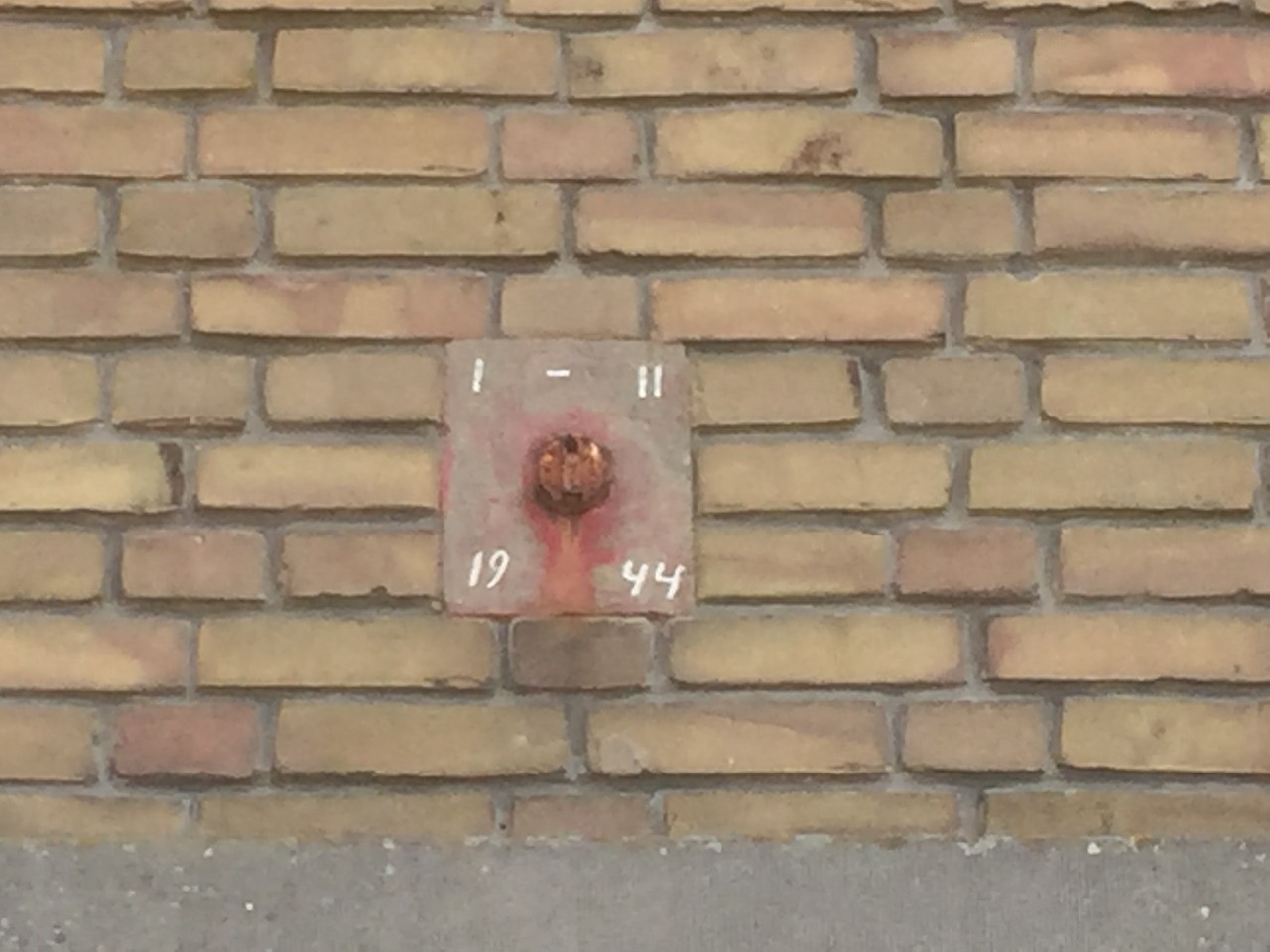On Sunday afternoon, October 29, around four o'clock, the center of Kaatsheuvel is taken by the 5/7th Battalion Gordon Highlanders. They move no further than the corner of Hoofdstraat and the current Jan de Rooijstraat. Another battalion, the 5th Black Watch, liberates the hamlet of Berndijk around the same time and later reaches the Hoge Zandschel. The western part of Hoofdstraat is a dangerous no man's land that night.
The next day the advance was continued via the Zuidhollandsedijk to Sprang-Capelle and Waspik. In this last place the liberators encountered German resistance, during which the tank of 21-year-old Delwyn Price was hit and he was killed. He is then buried on the Zuidhollandsedijk. 21-year-old Delwyn Price was from Dowlais, Glamorgan, Wales. Delwyn Price's grave is still in the cemetery on the Zuidhollandsedijk.
Also noteworthy on the Zuidhollandsedijk is the shell fragment embedded in the façade of house number 55, with 1-11-1944 around it in white numerals. At that time, Jan van Doornik and his family are living in the house. He works as a bricklayer at the Mission House in Kaatsheuvel.
On October 30, 1944, the liberation of the Zuidhollandsedijk (also called Loonschendijk) also follows. But the Allied advance stops at the Bergsche Maas. Thus, although the Langstraat is liberated, it is still in the field of fire of the Germans, on the other side of the Maas. After the war, Jan van Doornik bricked up the tip of a shell as a lasting reminder, albeit with the wrong date of liberation, November 1, 1944. Still, with his gesture he has created a lasting reminder of World War Two.
